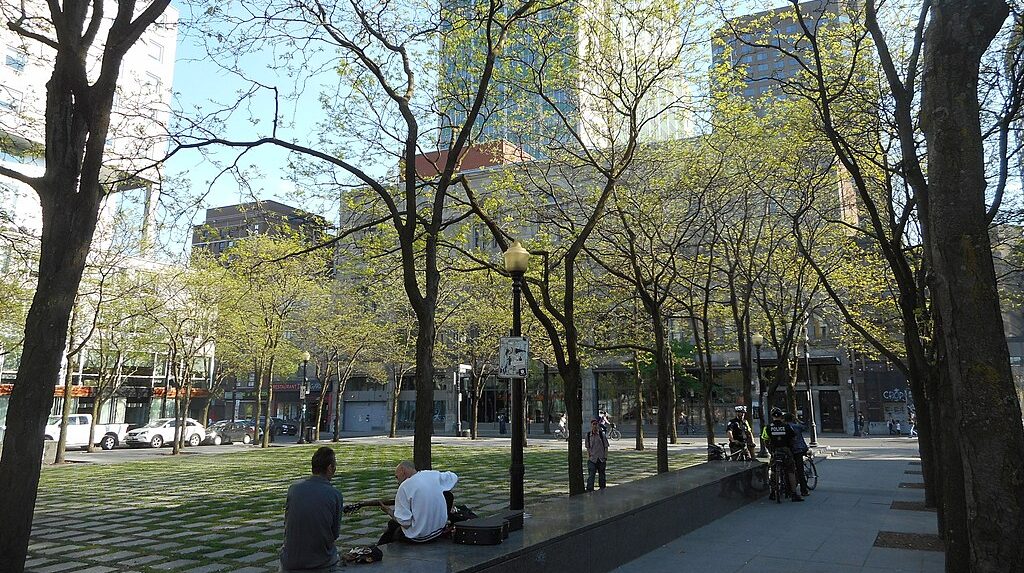It's a shame businesses so often line up against better bike infrastructure. Believing that business depends on customers who drive, local store owners have opposed bike improvements in Philadelphia, Memphis and many other cities.
But research shows that bike facilities and local businesses are, in fact, complementary. Joe Peach at Network blog This Big City reports on a number of studies indicating that increased sales resulting from bike improvements outweigh losses incurred by having fewer car-driving customers:
Based on data from more than 1,000 survey respondents, Alison Lee found that, even though cyclists spend less on average, improvements to urban bicycle networks still bring retail benefits. Lee suggests that by replacing one car parking space with six bicycle parking facilities, the lower average spend of a cyclist could be multiplied, offering improved revenue opportunities for nearby businesses. Of course, this simple mathematical equation, whilst theoretically true, assumes enough demand to keep the bicycle parking facilities adequately full.
Despite this, Lee’s findings are remarkably similar to a study from the Dutch city of Utrecht which found that whilst bicycle-based consumers spend less per transaction, they make more visits and spend the most collectively. This isn’t the only connection – a German study found similar results, calling cyclists ‘better customers’ due to them making eleven trips per month compared to seven for motorists. And the Swiss are in on it too, where research into parking space profitability found that each square metre of bicycle parking generated €7500 compared to €6625 for cars. This seems to confirm basic logic – devoid of any significant storage space, cyclists are likely to spend less and shop more.
You can also add to Peach's list a study of Bloor Street in Toronto [PDF], which found that only 10 percent of customers arrived by car, and that those who biked or walked came more frequently and spent more money than driving customers.
Portland businesses, perhaps due to their longer history with bike infrastructure, seem to have figured this out for themselves. There, overwhelming demand for on-street bike parking among businesses means the city has a long waiting list.
Elsewhere on the Network today: The Commuter Page Blog says communities should use transportation demand management to make the most out of their existing transportation systems. Cap'n Transit says too many transportation agencies do not honestly explore the "no-build" option in project assessments. And Rebuilding Place in the Urban Space looks at the housing crisis and sprawl in Phoenix.






